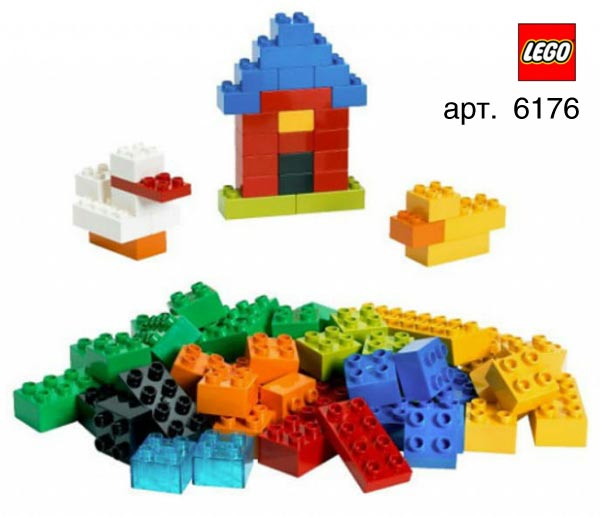Hamsters
These little fluffy rodents are one of the most popular pets.
Hamsters won a strong place in the homes and hearts of caring owners thanks to their unpretentiousness, friendliness and quick wit. But despite all their advantages and popularity, the decision to settle a new fluffy pet in your home must be approached with all responsibility.
To buy or not to buy?
The first thing you need to pay attention to is that family members are not allergic to animal hair or bedding fillers. Second, but no less important, is the choice of a place for the cage of the future pet. Hamsters equally do not like drafts, too warm or cold air, dampness. They have no place in a smoky room, on the floor or windowsill. It is important to remember that these are living beings and they have the right to demand a decent attitude towards themselves.

Other indisputable advantages of keeping hamsters are their low cost, ease of care, which does not require special skills. A small amount of food that a hamster needs for a full life will not affect the family budget in any way, and his cage will not take up much space in the apartment.
What is the best age to buy?
Unlike other pets, hamsters do not live long - an average of one and a half to three and a half years. If you still decide to get a new pet, it is better to acquire it at the age of no more than two months. Young hamsters quickly get used to the new environment, are easier to educate, they are easier to accustom to the tray.

Whom to choose - male or female?
The choice of the sex of a hamster entirely depends on the preferences of its future owners, however, if only one hamster plans to live in your house, then experts recommend purchasing a male. The procedure for determining the sex of a hamster is quite simple - you need to carefully put it on the palm of your hand or take it by the scruff of the neck and look at the distance between the genitals and the anus. In females, this distance is very small - no more than three millimeters, and in males - up to one and a half centimeters.
Cell selection
A cage with vertical or horizontal bars is the most suitable and comfortable home for a hamster. Its size depends on the breed of hamsters. For dwarf - Dzungarian and Robor - height and width are about 30 cm, length - 50 cm. For golden, or Syrian, hamsters, it is better to choose a larger cage - 40 cm wide and high, about 60 cm long.
Unlike Syrian hamsters, Djungarian and Robor hamsters are indifferent to climbing bars and other acrobatic tricks, so plastic cages (dunes) are quite suitable for them. In no case should hamsters be settled in tall and narrow aquariums - bacteria multiply very quickly here, high humidity and almost no access to fresh air.

Cell interior
To make your pet feel happy and healthy, it needs not only to be fed, but also entertained. Golden hamsters cannot do without climbing devices - various decorative twigs, tubes, labyrinths, obstacles that create several tiers in the cage at once. It also requires a wheel with cross bars, it can be attached to the wall or installed on the floor of the cage.
As bedding, medium-sized sawdust, pressed or mixed with shavings, as well as fine sifted sand for dwarf rocks, are most often used. All types of textile or paper bedding, including newspapers, cotton wool, rags, are categorically excluded.
An important place in a hamster's home is a house for sleeping and resting, here he can store valuable things for him. The house should be spacious enough and comfortable, preferably attached to the wall. Its design should provide easy access for washing and ventilation.

Having bought a cage and settled a hamster in it, immediately install a toilet in it with a special filler that absorbs odor and moisture. It is necessary to teach a hamster to go to the tray from an early age, otherwise it will be very difficult, and often impossible, to retrain him. Once a week, the filler must be replaced.
You can buy a feeder at the store or make your own, taking into account the size of your pet. On average, the size of the feeder varies from three to ten centimeters, with a height of about one and a half centimeters.
As a drinker, you can use a small container - about 50 milliliters. This volume will fully satisfy the daily need of a hamster for water. The water in the drinker should be changed daily, and it is also very important to ensure that there are no wet sawdust around the container.

We buy only healthy hamsters
When choosing a hamster, it is very important to make sure that your future pet is healthy. A visual inspection and observation of his behavior will be enough to make sure that everything is in order with him. So, a hamster is healthy if:
- he has a shiny thick skin, with no signs of hair loss. Scars spoil the appearance of the animal, but do not speak of its poor health.
- his eyes are clear, clean all around and brilliant.
- no discharge from the nose, the nose itself is healthy and clean.
- the fur around the anus is clean, without signs of diarrhea or inflammation.
A hamster who has just been awakened should not show excessive anxiety or, conversely, apathy. Both options speak of the stressful state of the animal, which can subsequently result in high vulnerability and disease. Only Roborovsky hamsters are distinguished by increased fussiness in any circumstances.

Do you need neighbors?
Your hamster will react very painfully if someone else lives in his cage. Therefore, there should be as many cages as you plan to have hamsters.
Getting used to a new home
In order for your new guest to quickly get used to the new conditions for him, give him a few days to leisurely explore your home. As the initial stress wears off, innate curiosity will take over and the hamster will begin to explore its cage with interest, feeling more and more confident.
If it becomes necessary to take the animal, for example, to the veterinarian, for this it is not at all necessary to take the entire cage with you - it is enough to purchase a small carrier for rodents. Subsequently, it will come in handy during the general cleaning of the cage. Alternatively, a well-ventilated cardboard box can be used.

How to deal with a hamster?
To gain the trust of a hamster, it will take patience and some time. However, all the efforts spent on this will pay off completely - communication with your pet will only bring you joy. What can and cannot be done when dealing with hamsters?
It is forbidden:
- make sudden movements or wave your arms near the hamster;
- pick up a just woken up or sleeping hamster;
- corner or cover with palms;
- screaming loudly near the cage;
- leave it on high surfaces - it does not distinguish between distances and will definitely fall down;
- with a rough movement to take by the scruff of the neck.
Can:
- talk to the animal in a soft, calm voice;
- taking him in your arms, do it slowly and carefully, clasping him under the front paws;
- touch the hamster only with clean hands and give him the opportunity to sniff your hand beforehand - so he will quickly get used to your smell;
- give him a chance to calm down if he is scared.

What to do if bitten by a hamster?
Hamsters are harmless, but very sensitive and shy creatures. Therefore, sometimes there is a risk of being bitten, but not out of malice, but in self-defense. In addition, if your hand smells like food, the hamster may simply mistake it for a delicious treat. What to do if you are bitten?
First, to remain calm and not punish the animal - he did it not from evil. Gently put it in the cage and treat the bite with brilliant green, alcohol or hydrogen peroxide, stick a patch. If your hamster is healthy, then there will be no dangerous consequences from the bite.

What and how to feed hamsters?
The main food of hamsters is solid grains such as wheat, oats, and millet. They also like to nibble on seeds and nuts, but these delicacies should not be made their main food, it is better to leave them as a dessert. Hamsters satisfy the need for fluids and vitamins through juicy vegetables and fruits - apples, carrots, pears, celery, cucumbers, beets, corn. Garlic, onions, citrus fruits and white cabbage should be excluded from their diet. Sometimes a hamster can be pampered with sweet berries in small quantities - strawberries, raspberries, grapes.
Feeding occurs twice a day - in the morning and in the evening. To determine the portion size and taste preferences of your pet, just watch him for a while. And do not forget to put him a drinker with clean water every day.

Water treatments and nail trimming
Hamsters do not like to swim, so water procedures should be resorted to only as needed. For bathing, a special rodent shampoo is best, after which the fur should be blotted with a soft towel. If the room is cool and you are worried that it will freeze, you can lightly dry it with a hair dryer, a weak stream of warm air.
Overgrown claws are cut with great care with a special nail cutter or manicure tweezers.

Hamster breeding
Mating hamsters is allowed after both partners reach the age of three months.
On average, the duration of pregnancy in hamsters is two and a half to three weeks.
For about three weeks, the babies born will be fed on mother's milk. During this period, it is advisable to add a small amount of protein to the female's diet - a hard-boiled egg, a piece of cheese or boiled chicken. Before childbirth, it is better to move the cage with the expectant mother to a quiet, low-light place.
If the female is young and has become a mother for the first time, she may abandon her cubs and even eat them. Unfortunately, if this happened before the babies reached at least ten days of age, then it will not be possible to save them. After 3.5 - 4 weeks, the cubs are planted, settling in separate cells. They should not be allowed to be near their mother for more than five weeks.

Newborn hamsters are hairless, deaf and blind. For the first few days, their main food is mother's milk, then they gradually switch to small grains. At the end of the first week, their hair begins to grow, at the end of the second, their eyes open. Within a month, they will have completely mastered the world around them.
After the offspring has been born, the male should not be in the same cage with the female - he will not harm the babies and even help in caring for them, but it is very likely that the female will become pregnant again, and this can be dangerous for her health.
Signs of illness in hamsters
You can determine if your pet is sick by the following signs:
- wet fur and heavy breathing;
- increased aggressiveness or apathy;
- hair loss or sores on the skin;
- chills, frequent stools (liquid or dry);
- the presence of blood-sucking insects - lice, fleas.
- The latest methods of teaching traffic rules
- How to draw pictures by numbers
- Do-it-yourself home digital microscope
- How to choose the right paint for drawing
- When is the best time to sunbathe?
- What kind of bird is better to have in an apartment?
- We put an apostille on the birth certificate on our own
- Is it possible to give flowers in pots - signs
- How to make cat ears
- Gray bag: what to wear and combine?
- How to get started with Faberlic: tips for new consultants
- Bioinsecticide Lepidocid: purpose, properties and application procedure Lepidocide waiting period
- How to change the language to Russian in steam
- Dendrobium noble: room care
- Morphology of plants general concepts - document
- Planting, propagation and care of bamboo at home, photo Growing bamboo from seeds
- How to strengthen the cellular signal for the Internet in the country
- Sanskrit reveals the forgotten meaning of Russian words (2 photos)
- The oldest language Sanskrit programming language of the future Dead language Sanskrit
- Who has dominion over all the earth?








